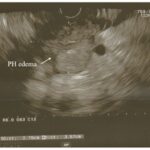Cataracts are a prevalent eye condition, especially among older adults, leading to blurred vision and potential vision impairment. Accurate diagnosis and coding are crucial for effective treatment, insurance claims, and public health tracking. In the United States, the Cataract Diagnosis Code under the International Classification of Diseases, 10th Revision, Clinical Modification (ICD-10-CM) system is essential for classifying and reporting cases of cataracts. This article delves into the specifics of ICD-10-CM code H26.9, Unspecified cataract, providing a comprehensive overview for healthcare professionals and those involved in medical coding.
Decoding ICD-10-CM Code H26.9 for Unspecified Cataract
ICD-10-CM code H26.9 is designated as the diagnosis code for unspecified cataract. This code is utilized when a patient is diagnosed with a cataract, but the specific type, location, or cause of the cataract is not further specified in the medical record. It’s a billable and specific code, meaning it’s recognized for reimbursement purposes by insurance providers in the United States. The code is part of the broader ICD-10-CM system used to standardize diagnoses across healthcare settings.
Who uses this code and why is it important?
- Ophthalmologists and Optometrists: Use H26.9 to document a cataract diagnosis when detailed specifics are not yet determined or not clinically relevant at the initial encounter.
- Medical Coders and Billers: Rely on H26.9 for accurate medical coding and claim submissions for cataract-related services, ensuring proper reimbursement.
- Healthcare Administrators and Public Health Agencies: Utilize aggregated data from H26.9 coding to track cataract prevalence, understand healthcare utilization patterns, and inform public health initiatives related to eye care.
Understanding the nuances of cataract diagnosis codes like H26.9 is vital for maintaining accurate patient records, facilitating efficient billing processes, and contributing to meaningful healthcare data analysis.
Synonyms and Related Terms for H26.9
To effectively use cataract diagnosis code H26.9, it’s helpful to be familiar with various terms that may lead to its assignment. While H26.9 is for “unspecified cataract,” the clinical notes might use descriptive terms that, if lacking further detail, could be coded as H26.9. Some approximate synonyms and related terms for unspecified cataract include:
- Cataract (NOS – Not Otherwise Specified)
- Incipient cataract (if laterality is not specified)
- Capsular cataract (if type or location is not further detailed)
- Non age related cataract (if type or location is not further detailed)
- Nonsenile cataract (if type or location is not further detailed)
It’s important to note that if the documentation provides more specific information, such as “posterior subcapsular cataract,” or laterality like “cataract of the left eye,” a more specific ICD-10-CM code within the H25-H26 category should be used for greater accuracy.
Clinical Context of Unspecified Cataract: Symptoms and Diagnosis
A cataract, in general terms, refers to the clouding of the eye’s natural lens. This clouding obstructs light from properly reaching the retina, leading to visual disturbances. While H26.9 is the cataract diagnosis code for unspecified cases, recognizing the symptoms of cataracts is crucial for timely diagnosis and management. Common symptoms associated with cataracts include:
- Blurred vision: Vision may appear hazy, cloudy, or less sharp.
- Faded colors: Colors may seem less vibrant or appear washed out.
- Glare: Sensitivity to bright light, with halos appearing around lights, especially at night.
- Night vision difficulties: Reduced ability to see clearly in low-light conditions.
- Double vision: Seeing two images of a single object.
- Frequent prescription changes: A need for more frequent adjustments to eyeglasses or contact lenses.
Diagnosing cataracts typically involves a comprehensive eye examination by an eye care professional. This exam includes visual acuity tests, slit-lamp examination, and dilated eye exam to assess the lens and identify any clouding. While the initial diagnosis might be a general cataract, leading to the cataract diagnosis code H26.9 if unspecified, further examination may reveal the specific type and location, prompting a more specific code assignment.
H26.9 in the ICD-10-CM Code System and History
ICD-10-CM code H26.9, Unspecified cataract, falls under the chapter “Diseases of the Eye and Adnexa (H00-H59)” and the section “Cataract and Lens Disorders (H25-H28).” It is part of a hierarchy of codes that become more specific as you move further into the subcategories. For instance, codes adjacent to H26.9, such as H26.8 (Other specified cataract) and more granular codes like H26.411 (Secondary cataract, right eye), allow for greater detail when coding cataract diagnoses.
Code History: H26.9 was established as a new code in 2016 with the implementation of ICD-10-CM in the United States. It has remained unchanged through the annual updates of the ICD-10-CM system, including the most recent 2025 edition, effective October 1, 2024. This stability highlights its continued relevance and importance as a fundamental cataract diagnosis code.
In conclusion, understanding the cataract diagnosis code H26.9, Unspecified cataract, is essential for accurate medical documentation, coding, and healthcare data management. While it serves as a general code, healthcare professionals should strive for specificity when clinically possible to enhance the quality of patient data and ensure precise coding practices. For further information and detailed coding guidelines, refer to the official ICD-10-CM documentation and resources available at xentrydiagnosis.store.
